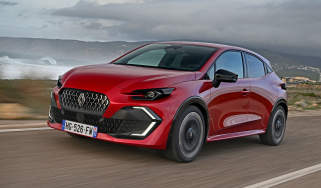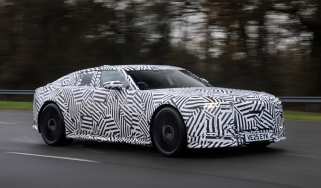How to name a car: the problems, pitfalls and legal challenges car brands must face
Naming a car is more complex than you might expect. We chat with industry experts to discover what makes a great car name – and also what doesn’t
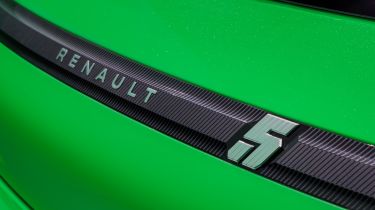
Being a new parent is an unenviable task; late-night screaming fits and nappy changing aside, having the responsibility of bestowing upon a child a name that will define them for the rest of their lives is daunting.
The same goes for car brands preparing to name their latest model; pick the wrong order and combination of numbers and letters, and a potential sales success could turn into a financial flop or, perhaps even worse, a national punchbag (we’re looking at you, new Ford Capri).
What’s the key to a good car name?
So what makes a winning car name? Lee Waterhouse is the founder of leading UK car branding and marketing firm, WDA Automotive, and according to him, the recipe for success is to find a name that “creates a connection with the audience, while giving a clear differentiation”.
Waterhouse continues: “In a snap, you want the audience to realise this vehicle is for me, and only this vehicle will satisfy my criteria and desires, to the exclusion of all other brands.”
The vice-president of Renault Global Marketing, Arnaud Belloni, is the key person responsible for naming the firm’s growing line-up of cars. He admitted to Auto Express that, for a while, Renault used computers to randomly generate names: “I’ll give you an example with ‘Kadjar’, Belloni says. “It was built by a computer and means nothing. It was AI-generated, before AI became a popular thing.”
Nowadays, the French manufacturer tries to call its cars after something that has more genuine meaning. “A name needs to describe something,” Belloni tells us. “It needs to be tangible.” The most recent example of this is the firm’s new flagship model, the Rafale, with Belloni claiming to be the nameplate’s “father”.
Having delved into the history books, he discovered that Renault bought an aviation firm called Caudron in the thirties. The Rafale was one of Caudron’s racing planes and, with a name that translates as ‘gust of wind’ or ‘burst of fire’, it seemed appropriate for the model tasked with spearheading Renault’s line-up.
Alphanumeric or not?
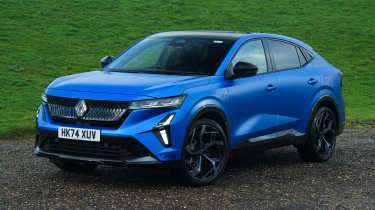
In stark comparison to something like Rafale, the alphanumeric naming style of a brand such as Audi (A3, A4, A5 etc.) may seem somewhat uninspired. However, Waterhouse explains that the reasoning for this is to “help facilitate the order and structure of a large range”, with the ascending nature of it all “encouraging customers to want to trade up” in order to get the car with the bigger number on the bootlid.
Belloni, on the other hand, splits the Renault line-up into three “pillars”, which may appear somewhat confusing to the untrained eye. The so-called Saga models, such as the Clio and Megane, are those that have undergone several generations and make up the first pillar, while the second comprises new names such as the aforementioned Rafale and the Austral.
The third pillar, known as Icons, consists of models revived from Renault’s past, such as the new R4 and R5. Belloni says the company has more than 1,000 of these names (not all alphanumeric) buried away in its archives.
Addressing the argument that this might confuse customers, Belloni says: “You can’t fight your past, you have to respect it. Renault is more than 126 years old and throughout its history you’ve got contractions – for 30 years we had letters, then alphanumerics and then names.”
Retro car names: winners and losers
On the subject of the Renault 5, the electric supermini is a prime example of the success that can come from reviving an iconic nameplate. In fact, Belloni says: “Renault should have revived the R5 much earlier!”
Waterhouse explains that the advantage of using an old name is that manufacturers “get a head start and are immediately able to leverage brand equity – people know the names and often, they are really admired and loved”.
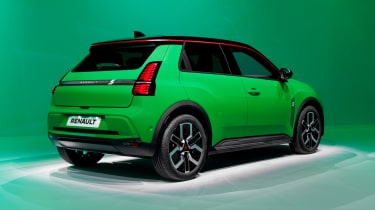
Of course, not all retro revivals are winners; Ford recently received a lot of online criticism for the revival of the Capri sports car as an electric coupé-SUV. Waterhouse also points to the larger Mustang Mach-E which, in his view, utilises a name “that symbolises everything an EV isn’t”.
He continues: “I wouldn’t necessarily criticise the marketing team behind it, but I think that’s a bad idea. The Mustang is synonymous with V8 muscle cars, a rebellious kind of positioning, but now suddenly you have that name on a family-friendly crossover. It dilutes the Mustang legacy.”
The legality of car naming
Of course, it’s hard to blame Ford for digging into its archives because, the experts say, it can be difficult to name a new model, given the several legal considerations firms have to bear in mind.
Referring to Renault’s back catalogue of nameplates, Belloni explains the company can lose some of its intellectual property rights if it doesn’t continue using them. When devising newer names, firms have to plan years in advance to ensure there are no legal clashes when it comes to a new model’s unveiling. “In Latin America, the deadline to register a car is 18 months,” Belloni says. “This means that at the last second, of the last hour, of the last day of this period, someone can disagree.”
With naming being the minefield that it is, Waterhouse explains that some firms are shying away from trademarking new models, instead pushing them into the public eye and hoping their popularity will provide some legal protection.
“We see more and more of this because of just how cluttered the naming space is – otherwise you’d just get bogged down,” he says.
Of course, there is an element of risk with this sort of approach. Referring to a certain Italian marque’s embarrassing renaming of one of its models after a legal threat from the Milanese public authorities, Belloni says: “We’re in a super-strategic business, and the Alfa Romeo Milano, now the Junior, is an example of a big failure.”
As you can see, naming a car isn’t simply a case of slapping a badge on something and calling it a day – creatives and experts from across different industries have to collaborate in order to generate something that’s not only attractive and eye-catching, but also functional in several markets without any legal implications.
With this in mind, Waterhouse believes the future could see a mix of more made-up names, as well as revivals from legacy brands wanting to leverage their own heritage to bolster sales.
“It’s so hard nowadays to come up with something that’s understood, memorable and ownable,” Waterhouse admits. “With this in mind, we could see more of the likes of A1, A2 etc in the future – it’ll be interesting to see.”
What makes the perfect car colour? Click here to find out...
Find a car with the experts


